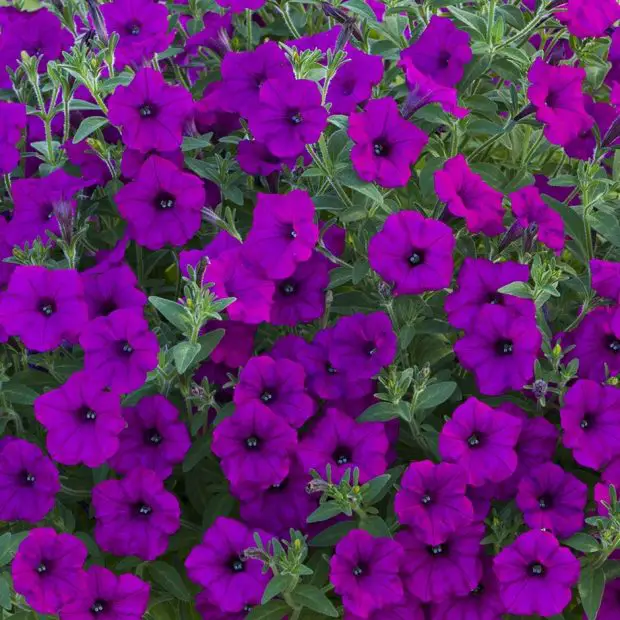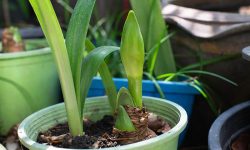Petunias are among the most popular flowering plants for gardens, balconies, and containers. Their wide range of colors, long blooming season, and pleasant fragrance make them a favorite for gardeners of all skill levels. But to keep petunias thriving from spring to fall, it’s important to provide consistent care tailored to their needs. This guide will walk you through every essential aspect of petunia care to ensure vibrant, non-stop blooms all season long. Whether you’re planting in beds, pots, or hanging baskets, proper care will reward you with a floral display that lasts for months.
Understanding Petunias: Types and Growth Habits

Common Varieties of Petunias
Petunias come in several main types, each with unique growth characteristics. Grandiflora petunias are known for their large, showy blooms and are ideal for containers. Multiflora petunias produce smaller flowers in abundance and are well-suited for bedding. Milliflora varieties have tiny but plentiful flowers and grow compactly. Spreading or trailing petunias, such as Wave petunias, are excellent for hanging baskets and ground cover. These varieties differ in size, bloom frequency, and maintenance needs, so choosing the right type for your space and preferences is the first step toward success.
Growth Preferences
Petunias thrive in full sun and well-draining soil. They prefer slightly acidic to neutral pH levels and need consistent watering to perform well. While they’re relatively easy to grow, regular attention helps prevent legginess and encourages more blooms. Petunias also appreciate good air circulation, which reduces the risk of fungal diseases and promotes stronger stems.
Planting Petunias for Maximum Bloom Potential
Choosing the Right Location
Select a spot that receives at least six hours of sunlight per day. Petunias grown in partial shade may survive but will produce fewer flowers. Morning sun with some afternoon protection is ideal, especially in very hot climates. Sunlight not only supports flower production but also intensifies petunia colors, giving your garden an extra visual punch.
Soil Preparation
Enrich the planting site with compost or well-rotted manure to ensure proper nutrients and drainage. For container planting, use a high-quality potting mix with added perlite or vermiculite to aid water retention and drainage. Testing your soil for pH and nutrient content can also be helpful; petunias prefer soil with a pH of 6.0 to 7.0.
Proper Spacing and Transplanting
When planting seedlings or transplants, allow enough space between plants to encourage airflow. This helps prevent fungal diseases and gives each plant room to spread. Handle the roots gently during transplanting to reduce shock and encourage faster establishment. Typically, space plants 8 to 12 inches apart depending on the variety.
Watering and Feeding Petunias
Watering Needs
Petunias like moist but not soggy soil. Water thoroughly when the top inch of soil feels dry, preferably in the morning to prevent fungal problems. Container-grown petunias may need daily watering during hot weather, while garden plants typically require less frequent irrigation. Make sure excess water can drain freely to avoid root rot.
Fertilization Schedule
To keep petunias blooming continuously, regular feeding is essential. Begin with a balanced fertilizer at planting time. Once flowering starts, switch to a phosphorus-rich formula every two weeks to encourage more buds. Slow-release fertilizers can also be mixed into the soil at the start of the season for ongoing support. In between feedings, you can supplement with compost tea or diluted fish emulsion to give your plants an extra boost.
Pruning and Deadheading Techniques
Why Prune Petunias
Without regular maintenance, petunias can become leggy and sparse. Pruning promotes bushier growth and increased flower production. Cutting back stems by one-third every few weeks helps rejuvenate the plant. This not only encourages new growth but also extends the flowering season, allowing the plant to put energy into new buds rather than seed production.
How to Deadhead Effectively
Deadheading, or removing spent blooms, prevents seed formation and redirects the plant’s energy toward producing new flowers. Pinch off faded blooms with your fingers or small scissors, including the seed pod below the flower. For varieties that self-clean, such as some Wave petunias, deadheading may not be necessary, but occasional grooming still helps improve appearance. Regularly removing dead or damaged foliage will also keep the plant healthy and attractive.
Dealing with Pests and Diseases
Common Petunia Problems
Petunias are generally hardy, but they can be affected by aphids, spider mites, whiteflies, and caterpillars. Fungal diseases such as powdery mildew or root rot can occur in poorly drained soil or overly humid conditions. If you notice leaves turning yellow, wilting, or developing spots, act quickly to diagnose and treat the issue.
Natural and Chemical Control Methods
Encourage natural predators like ladybugs to control aphids. Neem oil or insecticidal soap can be applied to affected areas. Ensure good airflow, avoid overhead watering, and remove infected leaves to minimize disease spread. For severe infestations, garden-safe pesticides may be used according to instructions. Regular inspection of your plants can help catch problems early before they spread.
Seasonal Care Tips for Continuous Blooming
Early Season
Start feeding early and establish strong roots. Pinch back early growth to encourage bushiness. Watch for early signs of pest activity and treat them before they escalate.
Mid-Season
Monitor watering closely, prune regularly, and provide ongoing fertilizer. Rotate containers or garden beds slightly if plants appear to lean toward the sun. This helps keep the growth balanced and even. Regular grooming during this period is essential to maintain a lush appearance.
Late Season
Trim back plants to refresh their shape. Continue feeding and watering as needed. Remove any declining plants or sections to keep the display tidy and focused on active bloomers. If you live in a colder region, start preparing for fall by reducing fertilizer and watering gradually.
Indoor and Overwintering Considerations
Growing Petunias Indoors
Although typically outdoor plants, petunias can be grown indoors in bright, sunny windows. Ensure the container drains well and rotate it for even light exposure. Use a small fan to improve air circulation and prevent mold or mildew from forming. Indoor petunias may bloom less profusely but can still add a splash of color through the colder months.
Saving Petunias Over Winter
Petunias are usually grown as annuals, but you can overwinter them indoors in pots. Before the first frost, move healthy plants indoors, cut them back, and place them in a bright spot. Water sparingly through winter and resume regular care in spring. Alternatively, you can take stem cuttings and root them indoors, ensuring you have young, vigorous plants ready for the next season.
Frequently Asked Questions (FAQ)
How often should I water petunias?
Water when the top inch of soil feels dry. In hot weather, daily watering may be needed, especially in containers.
Do petunias need full sun?
Yes, they perform best with at least six hours of direct sunlight per day.
Why are my petunias not blooming?
Lack of sunlight, poor soil, or insufficient feeding may reduce blooms. Regular pruning and deadheading also help.
Can I grow petunias from seed?
Yes, but they require indoor starting 8–10 weeks before the last frost. Transplant seedlings outdoors once temperatures are stable.
Are petunias annual or perennial?
They are usually grown as annuals, though in warm climates or with indoor overwintering, some can survive multiple seasons.
Can petunias survive rain and wind?
Light rain is fine, but heavy downpours and strong winds can damage blooms. Place containers in sheltered spots or use garden fabric for protection during storms.
How do I encourage petunias to spread?
Regular pruning, adequate sunlight, and consistent feeding help petunias branch out. Trailing varieties will naturally spread more, especially in hanging baskets.
Conclusion
Petunias are vibrant, cheerful flowers that can bring months of color and beauty to any garden or balcony when cared for properly. With attention to sunlight, watering, feeding, and regular grooming, your petunias will thrive from early spring through late fall. By understanding their needs and responding to seasonal changes, you’ll enjoy a continuous display of blooms that transforms your outdoor space into a floral paradise. Whether you’re a beginner or seasoned gardener, petunias are a rewarding plant that responds generously to care.







What fertilizer do I use for my hanging petunia
Hello, nice to hear from you.
Thank you for sending question.
I think you should priority use organic fertilizer.
But to have a rapid grow, you also can use below kind of fertilizer:
1. Water-Soluble Fertilizer (Every 1–2 Weeks)
Look for an N-P-K ratio like:
20-20-20 (balanced growth)
15-30-15 (more blooms due to higher phosphorus)
Mix it with water and apply every 1–2 weeks during the growing season. Petunias in hanging baskets dry out and lose nutrients faster, so regular feeding is essential.
2. Slow-Release Granules (Apply Every 2–3 Months)
Examples: Osmocote Flower & Vegetable, or similar.
These release nutrients over time and reduce the need for frequent feeding. Combine this with occasional water-soluble fertilizer for best results.
3. Petunia-Specific or Bloom Booster Fertilizer
These are specially formulated for flowering annuals and often labeled as “bloom booster.” High phosphorus content helps maximize flower production.
I hope this answer can help you.